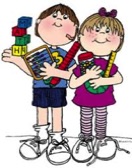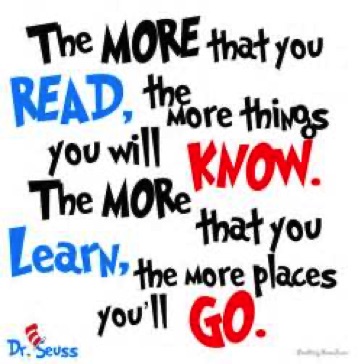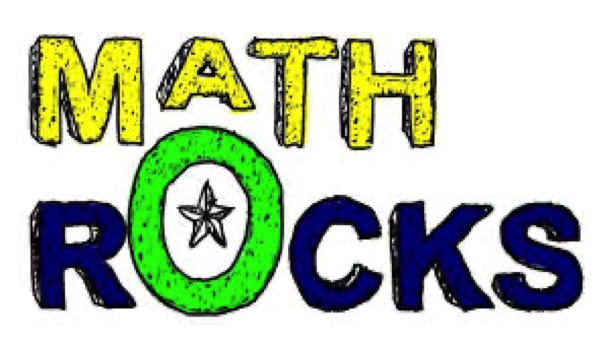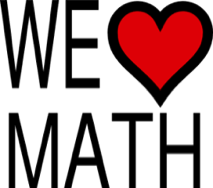Reading:
Literature- Key Ideas and Details
Students will:
-With prompting and support, ask and answer questions about key details in a text.
-With prompting and support, retell familiar stories, including key details.
-With prompting and support, identify characters, settings, and major events in a story.
Reading Literature – Craft and Structure
- Ask and answer questions about unknown words in a text.
- Recognize common types of texts (e.g., storybooks, poems).
- With prompting and support, name the author and illustrator of a story and define the role of each in telling the story.
Integration of Knowledge and Idea
-With prompting and support, describe the relationship between illustrations and the story in which they appear California State Standards
-With prompting and support, compare and contrast the adventures and experiences of characters in familiar stories.
Range of Reading and Level of Text Complexity
Actively engage in group reading activities with purpose and understanding.
Reading: Foundational Skills
Print Concepts
Demonstrate understanding of the organization and basic features of print.
Follow words from left to right, top to bottom, and page by page.
Recognize that spoken words are represented in written language by sequences of letters.
Understand that words are separated by spaces in print.
Recognize and name all upper- and lowercase letters of the alphabet
Phonological Awareness
Demonstrate understanding of spoken words, syllables, and sounds (phonemes).
Recognize and produce rhyming words.
Count, pronounce, blend, and segment syllables in spoken words .
Blend and segment onsets and rimes of single-syllable spoken words.
Isolate and pronounce the initial, medial vowel, and final sounds (phonemes) in three
phoneme (consonant-vowel-consonant, or CVC) words.
Add or substitute individual sounds in simple, one-syllable words to make new words.
Phonics and Word Recognition
Know and apply grade-level phonics and word analysis skills in decoding words.
Demonstrate basic knowledge of letter-sound correspondences by producing sound for each
consonant.
Associate the long and short sounds with the common spellings for the five major vowels.
Read common high-frequency words by sight (e.g., the, of, to, you, she, my, is, are, do.
Distinguish between similarly spelled words by identifying the sounds of the letters that differ.
Fluency
Read emergent-reader texts with purpose and understanding.
Writing
Text Types and Purposes
Use a combination of drawing, dictating, and writing to compose opinion pieces in which they tell a reader the topic or the name of the book they are writing about and state an opinion or preference about the topic or book (e.g., My favorite book is...).
Use a combination of drawing, dictating, and writing to compose informative/explanatory texts in which they name what they are writing about and supply some information about the topic.
Use a combination of drawing, dictating, and writing to narrate a single event or several loosely linked events, tell about the events in the order in which they occurred, and provide a reaction to what happened.
Production and Distribution of Writing
With guidance and support from adults, respond to questions and suggestions from peers and add details to strengthen writing as needed.
With guidance and support from adults, explore a variety of digital tools to produce and publish writing, including in collaboration with peers.
Research to Build and Present Knowledge
Participate in shared research and writing projects
With guidance and support from adults, recall information from experiences or gather information from provided sources to answer a question.
Speaking and Listening
Comprehension and Collaboration
-Participate in collaborative conversations with diverse partners about kindergarten topics and texts with peers and adults in small and larger groups.
-Follow agreed-upon rules for discussions (e.g., listening to others and taking turns speaking about the topics and texts under discussion).
-Continue a conversation through multiple exchanges.
-Confirm understanding of a text read aloud or information presented orally or through other media by asking and answering questions about key details and requesting clarification if something is not understood.
-Ask and answer questions in order to seek help, get information, or clarify something that is not understood.
Presentation of Knowledge and Ideas
Describe familiar people, places, things, and events and, with prompting and support, provide additional detail.
Add drawings or other visual displays to descriptions as desired to provide additional detail.
Speak audibly and express thoughts, feelings, and ideas clearly.
Language
Conventions of Standard English
Print many upper- and lowercase letters.
Use frequently occurring nouns and verbs.
Form regular plural nouns orally by adding /s/ or /es/ (e.g., dog, dogs; wish, wishes).
Understand and use question words (e.g., who, what, where, when, why, how).
Use the most frequently occurring prepositions
Produce and expand complete sentences in shared language activities
Capitalize the first word in a sentence and the pronoun I.
Recognize and name end punctuation.
Write a letter or letters for most consonant and short-vowel sounds (phonemes).
Spell simple words phonetically, drawing on knowledge of sound-letter relationships.
Counting and Cardinality
Count to 100 by ones and by tens.
Count forward beginning from a given number within the known sequence (instead of having to begin at 1).
Write numbers from 0 to 20. Represent a number of objects with a written numeral 0-20 (with 0 representing a count of no objects).
Understand the relationship between numbers and quantities; connect counting to cardinality. When counting objects, say the number names in the standard order, pairing each object with one and only one number name and each number name with one and only one object.
Understand that the last number name said tells the number of objects counted. The number of objects is the same regardless of their arrangement or the order in which they were counted.
Understand that each successive number name refers to a quantity that is one larger
Count to answer “how many?” questions about as many as 20 things arranged in a line, a rectangular array, or a circle, or as many as 10 things in a scattered configuration; given a number from 1–20, count out that many objects.
Identify whether the number of objects in one group is greater than, less than, or equal to the number of objects in another group, e.g., by using matching and counting strategies.1
Compare two numbers between 1 and 10 presented as written numerals.
Operations and
Algebraic Thinking
Understands Addition as Putting Together and Adding To, and Understand Subtractions as Taking Apart and Taking From.
Represent addition and subtraction with objects, fingers, mental images, drawings, acting out situations, verbal explanations, expressions, or equations.
Solve addition and subtraction word problems, and add and subtract within 10, e.g., by using objects or drawings to represent the problem.
Decompose numbers less than or equal to 10 into pairs in more than one way, e.g., by using objects or drawings, and record each decomposition by a drawing or equation (e.g., 5 = 2 + 3 and 5 = 4 + 1).
For any number from 1 to 9, find the number that makes 10 when added to the given number, e.g., by using objects or drawings, and record the answer with a drawing or equation.
Fluently add and subtract within 5.
Number & Operation in Base Ten
Compose and decompose numbers from 11 to 19 into ten ones and some further one.
For example, by using objects or drawings, and recording each composition or decomposition by a drawing or equation
(such as 18 = 10 +8);
Understands that these numbers are composed of ten ones and one, two, three, four, five, six, seven, eight, or nine ones.
Measurement and Data
Describe measurable attributes of objects, such as length or weight. Describe several measurable attributes of a single object.
Directly compare two objects with a measurable attribute in common, to see which object has “more of”/“less of” the attribute, and describe the difference. For example, directly compare the heights of two children and describe one child as taller/shorter.
Classify Objects and Count the Number of Objects in Each Category
Classify objects into given categories; count the numbers of objects in each category and sort the categories by count.
Geometry
Identify and Describe Shapes (Squares, Circles, Triangles, Rectangles, Hexagons, cubes, Cones, Cylinders and Spheres)
Describe objects in the environment using names of shapes, and describe the relative positions of these objects using terms such as above, below, beside, in front of, behind, and next to Correctly name shapes regardless of their orientations or overall size.
Identify shapes as two-dimensional (lying in a plane, “flat”) or three-dimensional (“solid”).
Analyze and compare two- and three-dimensional shapes, in different sizes and orientations, using informal language to describe their similarities, differences, parts (e.g., number of sides and vertices/“corners”) and other attributes (e.g., having sides of equal length).
Model shapes in the world by building shapes from components (e.g., sticks and clay balls) and drawing shapes.
Compose simple shapes to form larger shapes. For example, “Can you join these two triangles with full sides touching to make a rectangle?”
MATH PROBLEM SOLVING STANDARDS:
Make sense of problems and persevere in solving them. In Kindergarten, students begin to build the understanding that doing mathematics involves solving problems and discussing how they solved them. Students explain to themselves the meaning of a problem and look for ways to solve it. Younger students may use concrete objects or pictures to help them conceptualize and solve problems. They may check their thinking by asking themselves, “Does this make sense?” or they may try another strategy.
Reason abstractly and quantitatively. Younger students begin to recognize that a number represents a specific quantity. Then, they connect the quantity to written symbols. Quantitative reasoning entails creating a representation of a problem while attending to the meanings of the quantities.
Construct viable arguments and critique the reasoning of others. Younger students construct arguments using concrete referents, such as objects, pictures, drawings, and actions. They also begin to develop their mathematical communication skills as they participate in mathematical discussions involving questions like “How did you get that?” and “Why is that true?” They explain their thinking to others and respond to others’ thinking.
Model with mathematics. In early grades, students experiment with representing problem situations in multiple ways including numbers, words (mathematical language), drawing pictures, using objects, acting out, making a chart or list, creating equations, etc. Students need opportunities to connect the different representations and explain the connections. They should be able to use all of these representations as needed.
Use appropriate tools strategically. Younger students begin to consider the available tools (including estimation) when solving a mathematical problem and decide when certain tools might be helpful. For instance, kindergarteners may decide that it might be advantageous to use linking cubes to represent two quantities and then compare the two representations side-by-side.
Attend to precision. As kindergarteners begin to develop their mathematical communication skills, they try to use clear and precise language in their discussions with others and in their own reasoning.
Look for and make use of structure. Younger students begin to discern a pattern or structure. For instance, students recognize the pattern that exists in the teen numbers; every teen number is written with a 1 (representing one ten) and ends with the digit that is first stated. They also recognize that 3+2 = 5 and 2 + 3 = 5.
Look for and express regularity in repeated reasoning. In the early grades, students notice repetitive actions in counting and computation, etc. For example, they may notice that the next number in a counting sequence is one more. When counting by tens, the next number in the sequence is “ten more” (or one more group of ten). In addition, students continually check their work by asking themselves, "Does this make sense?
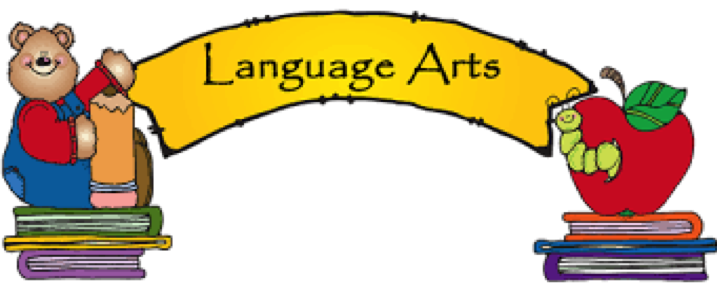
It is truly amazing to me when I think about what the children now learn in Kindergarten! Over the years there have been many changes in the standards and our curriculum. It is equally important to remember that that some basics of kindergarten have not changed!
Children will learn to love to read, write stories, and become proud mathematicians. Children also will paint, sing, build with blocks, and learn through play. Below, please view our specifics standards for math and language arts in Kindergarten. As you review these standards, please remember your child will have a balanced curriculum, with focus on strong academics, the arts, fine and gross motor skills, and social skills.
It will be an exciting year for you and your child to see the growth and progress!


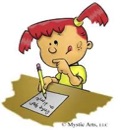

California Kindergarten Standards:
Langauge Arts and Mathematics
